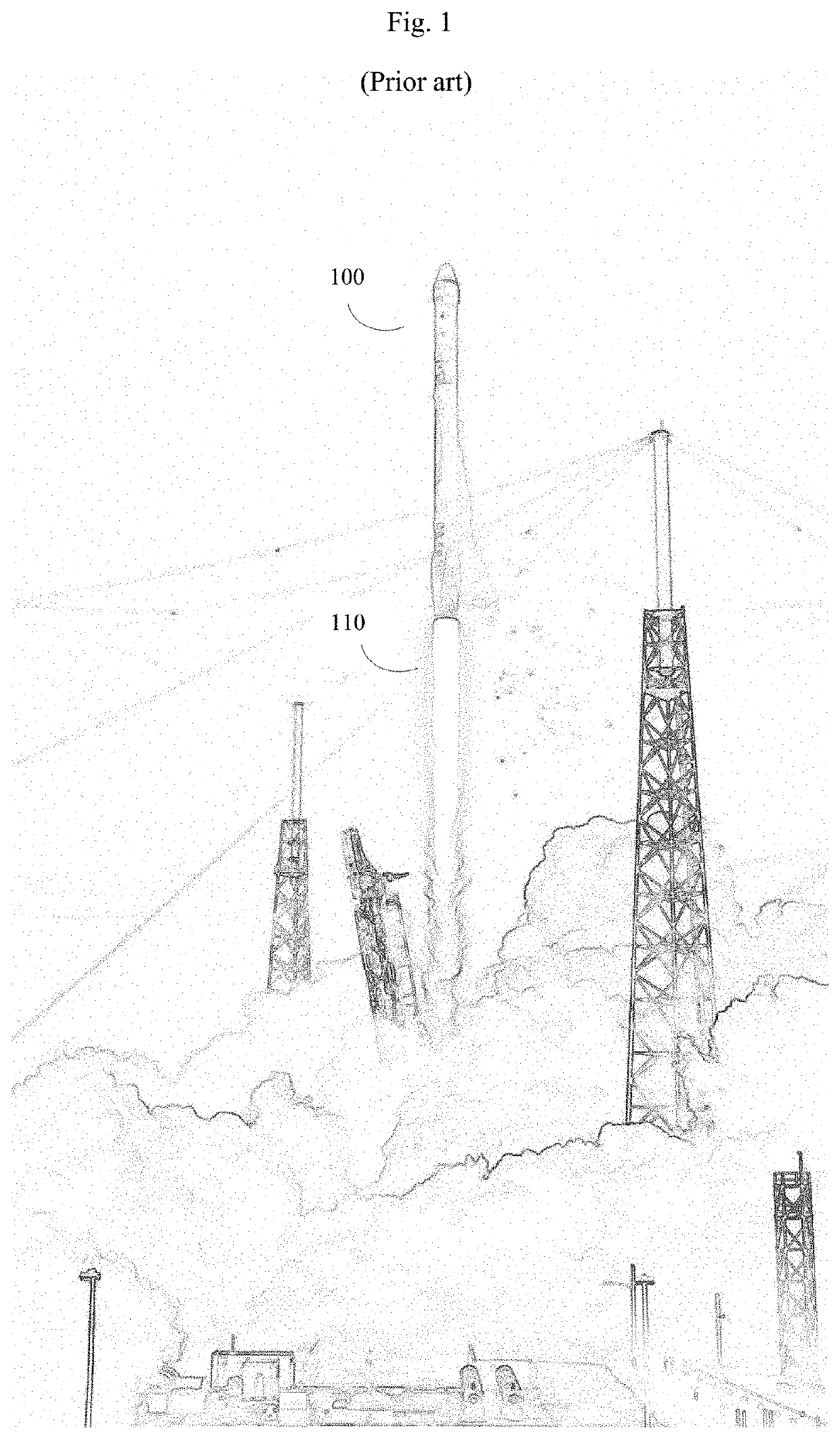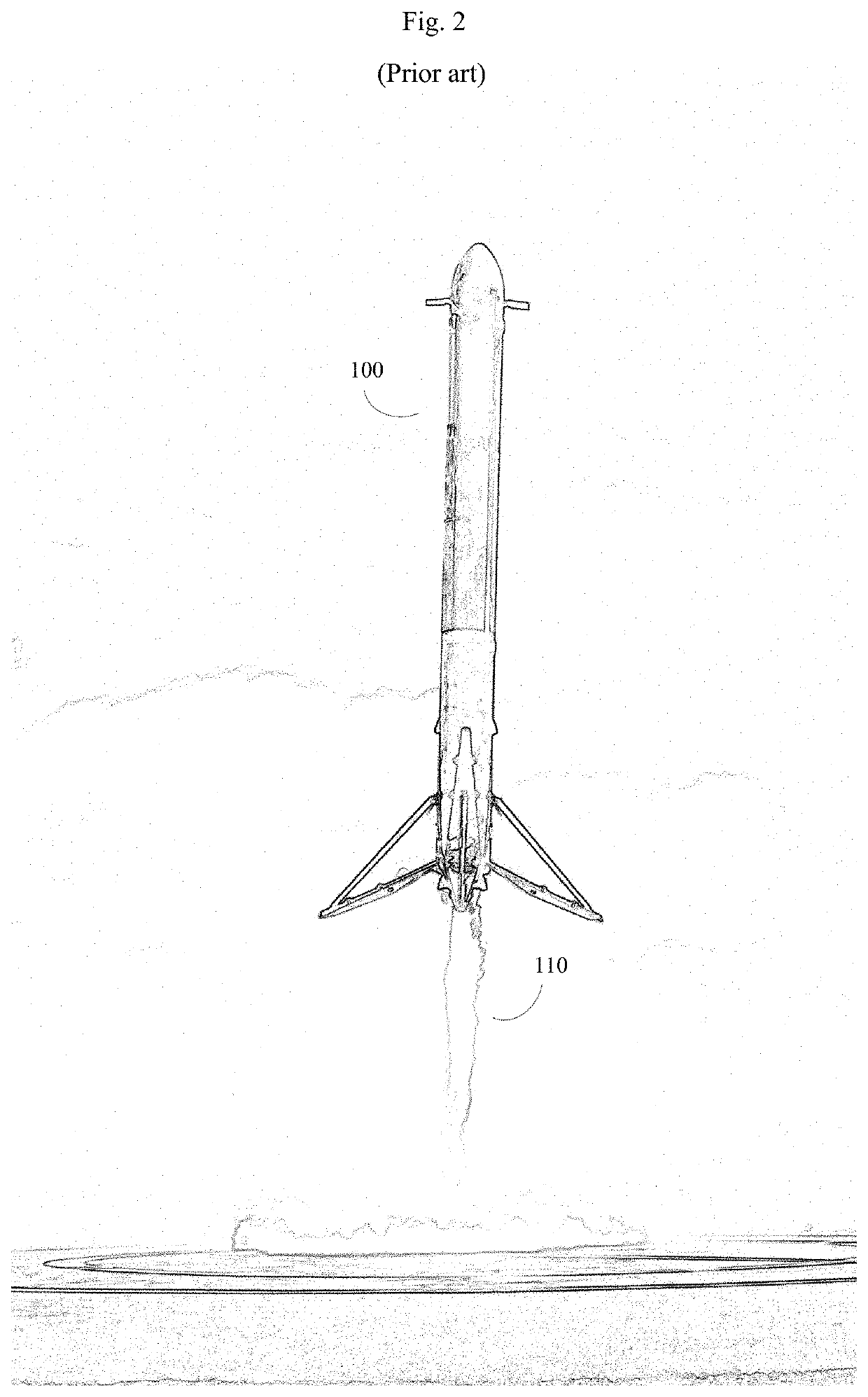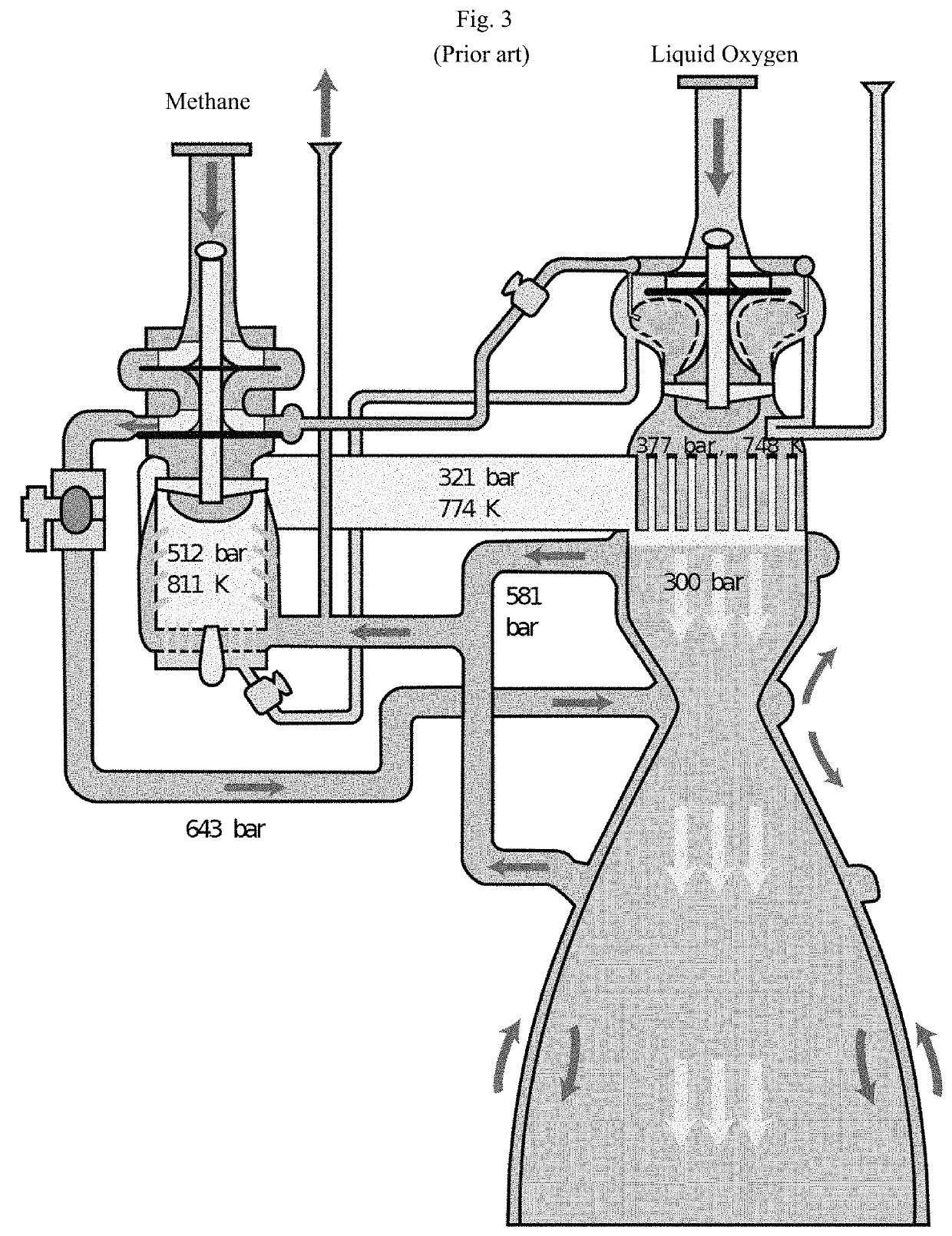Space rocket monitoring system for greenhouse gas emissions
- Summary
- Abstract
- Description
- Claims
- Application Information
AI Technical Summary
Benefits of technology
Problems solved by technology
Method used
Image
Examples
Embodiment Construction
[0029]The invention can be used to monitor greenhouse gas emissions during both rocket assents (takeoffs) and, for the latest reusable rocket boosters, rocket descents (landings) as well. Although in disclosure, SpaceX Falcon 9 rockets and Raptor engines have been used as examples, these examples are not intended to be limiting.
[0030]FIG. 1 shows an image of a rocket (here a SpaceX Falcon 9) on initial takeoff. Typically each rocket (100) has certain distinctive design features, which can be used to identify the rocket either visually, or by use of computerized vision systems. Note the distribution of the rocket exhaust plume (110). On takeoff, rocket engines are often throttled to different efficiency settings depending on the phase of the flight. For example, it is common to throttle rocket engines back while passing through the region of maximum dynamic pressure. Rocket engines also may be throttled to different extents depending on altitude, payload, presence or absence of side ...
PUM
 Login to View More
Login to View More Abstract
Description
Claims
Application Information
 Login to View More
Login to View More - R&D
- Intellectual Property
- Life Sciences
- Materials
- Tech Scout
- Unparalleled Data Quality
- Higher Quality Content
- 60% Fewer Hallucinations
Browse by: Latest US Patents, China's latest patents, Technical Efficacy Thesaurus, Application Domain, Technology Topic, Popular Technical Reports.
© 2025 PatSnap. All rights reserved.Legal|Privacy policy|Modern Slavery Act Transparency Statement|Sitemap|About US| Contact US: help@patsnap.com



